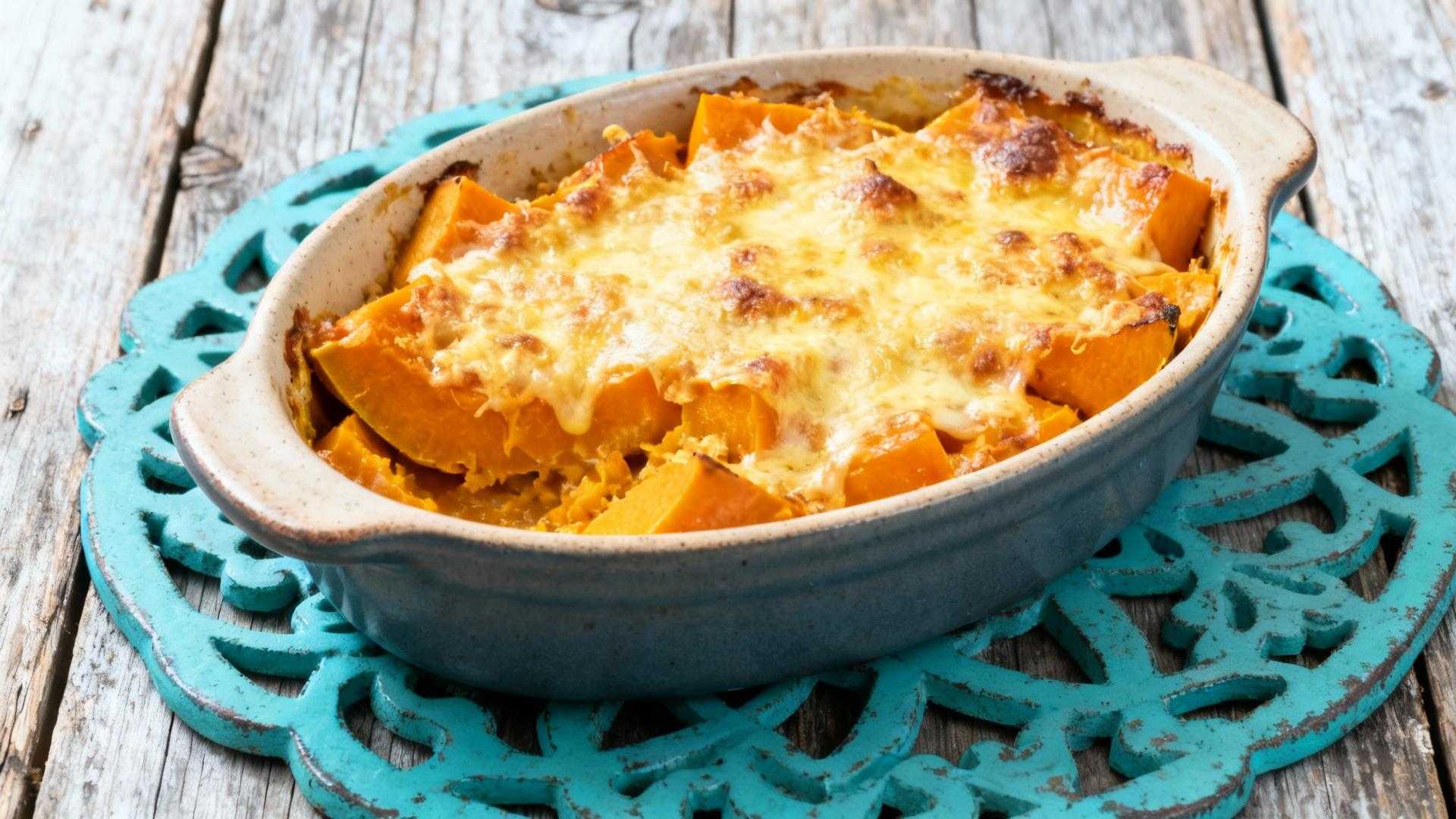Last winter, I stumbled upon my grandmother’s handwritten recipe book tucked away in her kitchen cabinet. Among the faded pages filled with French family secrets, one dish caught my eye: her famous butternut squash gratin. As someone who’d been experimenting with traditional French cooking techniques, I decided to make it every week for a month. What I discovered transformed not just my cooking skills, but my entire approach to comfort food.
Why this grandmother’s recipe matters now
This isn’t just another casserole—it’s a testament to French home cooking at its finest. The recipe combines tender butternut squash with cream, cheese, and a touch of nutmeg to create something extraordinary. Unlike complicated restaurant dishes, this gratin proves that simple ingredients can produce remarkable results when treated with care and patience.
During my month-long experiment, I learned that grandmothers knew what modern nutritionists are now confirming: butternut squash contains beta-carotene and vitamin A that support immune function. One cup provides over 400% of your daily vitamin A needs, making this comfort food surprisingly nutritious.
The technique that makes all the difference
Here’s what most recipes won’t tell you: the secret lies in how you prepare the squash before assembly. My grandmother insisted on salting the sliced squash and letting it drain for 20 minutes. This crucial step removes excess moisture that would otherwise create a watery, disappointing gratin.
I tested both methods—with and without draining—and the difference was remarkable. The drained version developed a golden, crispy top while maintaining a creamy interior. The undrained attempt turned soupy and never achieved that coveted texture contrast.
Three mistakes I made (so you don’t have to)
During my first attempt, I sliced the squash too thin, thinking it would cook faster. Wrong. The delicate slices disintegrated into mush. Aim for 1/4-inch thickness—substantial enough to hold their shape but thin enough to become tender.
- Using pre-shredded cheese: It contains anti-caking agents that prevent smooth melting. Freshly grated Gruyère creates that silky, cohesive top layer.
- Skipping the nutmeg: This subtle spice elevates the natural sweetness of squash without overpowering it. Just a pinch makes a noticeable difference.
- Overcrowding the dish: Layer squash slices with slight overlap, not piled high. This ensures even cooking and proper cream absorption.
Why French grandmothers knew about seasonal eating
My grandmother never heard the term “farm-to-table,” but she practiced it instinctively. She made this gratin exclusively during autumn and winter when butternut squash peaked in flavor and nutrition. Modern research confirms that seasonal eating provides optimal nutrient density and supports sustainable agriculture.
This approach aligns perfectly with what I discovered when exploring simple French desserts—traditional recipes often reflect deep wisdom about ingredient timing and quality.
The surprising health benefits I noticed
After four weeks of incorporating this gratin into my weekly dinner rotation, I noticed improved digestion and sustained energy levels. Butternut squash contains complex carbohydrates and fiber that provide steady fuel without blood sugar spikes, unlike the processed sides I’d been eating.
The combination of healthy fats from cream and cheese with the squash’s nutrients also enhanced the absorption of fat-soluble vitamins. This is something I learned while studying nutrient absorption patterns during other dietary experiments.
Making it work for modern schedules
The traditional recipe requires about 90 minutes total, but I developed a time-saving approach for busy weeknights. Prep the squash on Sunday, store sliced pieces in the refrigerator, and assembly takes just 10 minutes on weeknights. The baking happens while you prepare other dishes or unwind from your day.
- Prep ahead: Peel and slice squash up to 2 days in advance, storing in airtight containers with paper towels to absorb moisture.
- Freeze portions: Assemble individual servings in small dishes, freeze unbaked, then bake directly from frozen, adding 15 minutes to cooking time.
- Scale for meal prep: Double the recipe in a large baking dish, portion after baking, and reheat throughout the week.
The cultural connection that surprised me
What started as a cooking experiment became a bridge to my heritage. Each time I made this gratin, I felt connected to generations of French women who fed their families with care and creativity. This emotional dimension of cooking—something our convenience-focused culture often overlooks—proved just as nourishing as the food itself.
This mirrors what I experienced when comparing traditional cooking methods across different cuisines—authentic techniques carry cultural wisdom worth preserving.
Is traditional French cooking still relevant today?
After this month-long journey, I’m convinced that recipes like my grandmother’s butternut squash gratin offer something modern cooking often lacks: intentionality and connection. The slow preparation becomes meditation, the shared meal becomes communion, and the simple ingredients become profound nourishment. Perhaps that’s the real secret grandmothers have been trying to teach us all along—that the most valuable recipes aren’t just about food, but about how we choose to live and what we choose to value.
